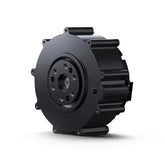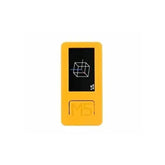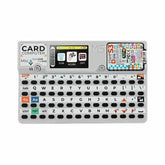LiDAR (Light Detection And Ranging, also known as LiDAR) systems are becoming more and more widely used in ranging applications, such as distance measurement in automotive, industrial and other applications, which is very promising for market development. This article will introduce you to the technical principles and development of LiDAR.
ToF As The Core Technology for LiDAR

LiDAR systems for industrial applications can support fields such as industrial automation, traffic control, rangefinders, etc. These systems will be based on different measurement techniques, such as the use of direct and indirect time of flight (ToF) techniques, where a very short laser pulse is emitted and then reflected by an object before it is detected, and by scanning the environment and measuring the propagation time of the laser pulse The 3D depth map can then be obtained. In various applications, with the help of creating maps, sweeping robots can store navigation paths throughout an apartment, and industrial robots can recognize workers to prevent causing interactive injuries.
LiDAR uses ToF as a core technology to measure the time taken from the sensor to the object and reflected back to the sensor to estimate the distance between the sensor and the object. The pulsed ToF method is the most common and direct method of distance estimation and has the advantage of generating high peak laser power at a low average optical power for long distance measurements under optical safety requirements. Another LiDAR ToF method is using phase shift ToF method, the distance is calculated by measuring the phase difference between the transmitted and received signals, the laser diode will emit a continuous wave (CW) signal to calculate the distance, this method is more suitable for short distance measurement. There are various LiDAR ToF applications available in the market, where the rangefinder application is operated using one-dimensional (1D) operation, but it can be extended to use n x m array of photodetectors for 3D LiDAR applications.

LiDAR Solutions for Pulsed ToF Systems

In order to speed up our customers' product development, we have introduced LiDAR solutions for customers' reference. The LiDAR ToF solution is aimed at range/distance measurement, and therefore utilizes a pulsed ToF system. The signal processing part of the LiDAR ToF system employs either a TDC (Time-to-Digital Converter) or ADC (Analog-to-Digital Converter) method for distance estimation. ADC (Analog-to-Digital Converter) method for distance estimation. The TDC-based method uses a high-precision clock device to count the start/stop events as the time difference, while the ADC-based method measures and digitizes the return signals at fixed intervals and then estimates the time difference.
The distance resolution in this LiDAR ToF system is inversely proportional to the combined rise and response time of the analog components (laser diode, laser driver, low-noise amplifier, and photodetector), and while the TDC-based method solves the resolution problem in the analog domain, the ADC-based method allows for a number of sophisticated schemes for digitizing and detecting the return signals as well as a complex baseband system and software to allow for some kind of fading phenomenon.
LiDAR ToF solutions choose the TDC-based approach to focus more on the analog hardware design to achieve better rise time and response behavior for optimal range detection applications in LiDAR solutions.
When using a pulsed ToF system, the 905nm wavelength will be used, as 905nm systems (IR) are better suited for pulsed operation with a maximum optical power of up to 75W or more, whereas 650nm lasers (Visible Red) typically do not achieve energized pulsed operation with a maximum optical power of about 100mW.
Narrow Pulse Operation for Extended Operating Range

The LiDAR ToF solution hardware design employs several options to achieve the best LiDAR performance in the analog domain.
To shorten the laser trigger pulse, a pulsed laser diode of ROHM RLD90QZW3 is used in the LiDAR ToF solution, which can support narrow-pulse operation with a pulse width of 15 nanoseconds, compared to the common pulse width of 30 nanoseconds used in conventional LiDAR solutions.By reducing the pulse width by 50%, it can provide higher optical power under the same operating conditions, thereby extending the operating range.
By using this short pulse width, the LiDAR ToF solution supports multi-pulse operation, which can improve measurement accuracy by averaging or statistically analyzing multiple measurements while eliminating ambient noise and interference.
The solution also enhances the PCB layout to further reduce the delay time in the laser driver section. The PCB layout plays an important role in the switching behavior in the laser transmission path, especially in this multi-supply system, as 25V must be provided for the laser diode and GaN FETs, 5V for the laser gate driver, 3.3V for the MCU system for the LD trigger pulse The design of the GND board is also critical for fast switching and optimizing the transmission delay by using the best signal return path.
In addition, the solution uses ON Semiconductor's SiPM RD series to replace traditional APDs (avalanche photodiodes) to further improve Rx response time, with the FAST OUT terminal in the SiPM providing <500 picoseconds of rise time response, which is 50% lower than the standard output terminal of an APD.
In Tx and Rx path detector systems, the Rx response time can be further improved by using faster comparators. Comparator circuits are used to convert the analog Rx and Tx signals into pulse start and pulse stop inputs from the TDC for timing calculations, so the propagation delays of the comparators are also critical in affecting the measurement accuracy. Using ADI's ADPCM600 fast comparator, a delay time of only 3 nanoseconds can be achieved at a 30mV input signal level, providing the best delay time in the LiDAR receive path.
This solution also uses GaN FETs in the laser diode to enable faster switching to further enhance transmission delay effectiveness. EPC GaN FET EPC2212 transistors are used in place of conventional MOSFET transistors to provide 10x faster switching behavior, resulting in shorter rise times in the laser transmission path.
Industry-leading Components for A Complete Solution
Key components of the entire LiDAR ToF solution include the ROHM RLD90QZW3 laser diode as a 75W 905nm non-visible pulsed laser diode, the EPC EPC2212 GaN FET as a 100V eGaN power transistor, the ON Semiconductor MicroRD-10035-MLP RD series as a silicon photomultiplier ( SiPM), the ADI ADCMP600 high-speed comparator is an extremely fast, 5.5 ns propagation delay TTL/CMOS comparator, and the ADI HMC589AST89E high-speed amplifier is an InGaP HBT gain block MMIC amplifier (DC - 4GHz).
There is also the ADI LT8330 wide input voltage DC/DC boost converter, supporting 3~40V input voltage, 1A, 60V switching boost converter, and the ADI LT3082 200mA low noise, low dropout voltage regulator (LDO), the NXP LPC54605J512BD100 of the 32-bit ARM contex-M4 microcontroller, the TI LMG1020 gate driver for ultra-fast gate drivers for GaN FETs, in addition to the TI TDC7201 time-to-digital converter (TDC) with Murata WMRAG32K76CS1C00R0 32.768kHz MEMS resonator.
Conclusion
LiDAR has demonstrated excellent performance in industrial automation, automotive peripheral distance detection, and other applications. With the rapid development of Industry 4.0 and automotive assisted driving, market demand is surging. With the rapid development of Industry 4.0 and automotive driving assistance, the market demand is surging. In view of this, we have launched the LiDAR ToF solution, which can accelerate the speed of manufacturers to develop related products, and put them into the market as soon as possible to seize the business opportunities.











Leave a comment
All blog comments are checked prior to publishing